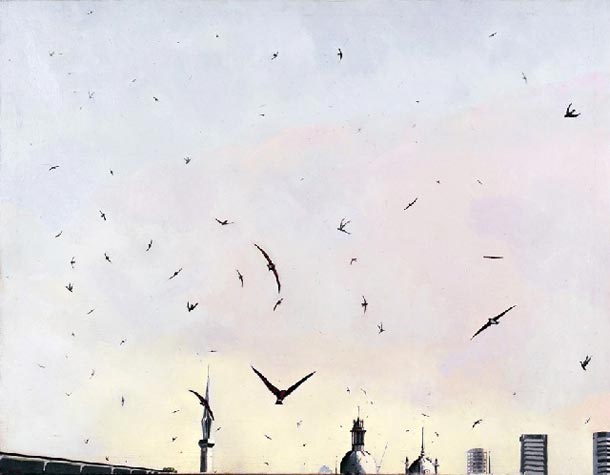
Gabriel Laderman, View of Kuala Lampur with Birds, 1982
Gabriel Laderman passed away from Leukemia this past Thursday. Here is a link to the New York Time Obit. He was a significant representational painter and teacher and was instrumental in the revival of figurative art in the 1960s. He studied with a number of leading American painters, including Hans Hofmann, de Kooning, and Rothko. Laderman had shown in musuem exhibitions such as the Whitney Museum of American Art, Museum of Fine Arts, Boston, Art Institute of Chicago and the Pennsylvania Academy of Fine Arts.
There is also a wonderful tribute written about him in “The New Republic” by Jed Perl “Against Inevitability, Honoring Gabriel Laderman, who wielded a battering ram on behalf of beauty.” one quote from this Jed Perl article really captures Gabriel’s character:
The tyranny of trends, vogues, and vanguards was something Gabriel refused to acknowledge. At a time when everybody wanted art to be fresh, Gabriel did not give a damn about the next new thing. He felt no need to grapple with what was happening simply because it was happening. His ability to explain what was wrong with a Color Field painting or a Neo-Dada sculpture interested me far less than his belief that such stuff could not possibly affect the work he was doing. He did not believe in the Zeitgeist. He believed in the individual. His great idea was that what an artist makes is a matter of personal choice and inner necessity, not a response to historical forces. He himself was a representational painter in an era when many said that representational painting was already dead and buried. But unlike some postmodernists, who see their resurgent representational impulses as a reaction against modernism and therefore the next step in a historical progression, Gabriel rejected the very idea of progress in art. He refused to accept the historical inevitability of certain kinds of art. Cubism was not what history had made Braque and Picasso do, it was what Braque and Picasso had wanted to do—and somehow managed to do. His tradition-consciousness was not a form of academicism. Everything was about personal encounters, a person’s unique response to the challenges of the rectangle, of volume and void, of line and color, of style, of emotion.
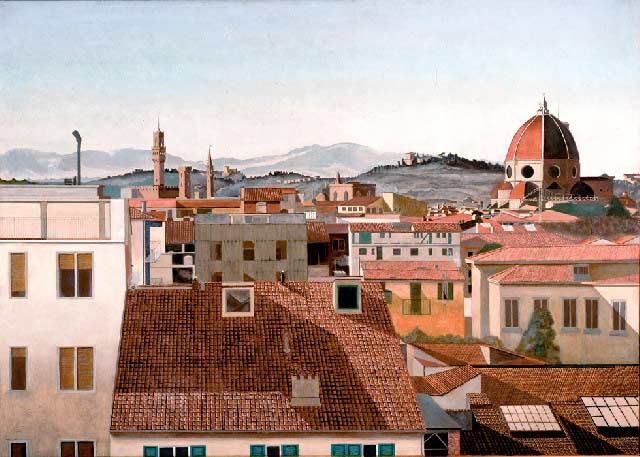
View of Florence, 1962-63
In an earlier essay written by Lincoln Perry states:
This is a man highly ambitious not just for himself as an isolated ego but for the art he loves and sees as an inherently moral force. Gabriel Laderman has consistently advocated thoughtfulness over excitement, poetic meaning over novelty, and has been telling us, in his urgent, angry, and loving way, that we can and must do better.
Later in this same article Perry states:
… In “The Future of Landscape Painting” (Artforum, November 1968), he wrote: “Generations of pictorial solutions are available to us; . . .the representational painter . . . should recognize that there are no viable rules and boundaries to his activity and proclaim his freedom by discovering and inventing the ones he needs to make a viable poetic statement.” He ended with an extended quote from Kuo Hsi, an eleventh-century Sung painter who describes a beautiful landscape as seen by a lover of forest and stream, which concludes: “Does not such a scene satisfy his mind and captivate his heart? That is why the world values the true significance of the painting of mountains. If this is not recognized, and the landscapes are roughly and carelessly approached, then is it not like spoiling a magnificent view and polluting the pure wind?”
One thinks of the current argument as to whether beauty is somehow misleading, a dishonest distraction from the cruelty around us. A man writing almost a millennium ago is warning us that art is our self-portrait as a species, and that we can pollute our art as easily as we pollute our world. In a letter further clarifying his “Notes from the Underground” (Artforum, September 1970), Laderman wrote: Rather than proselytizing for figuration exclusively I try to proselytize for an art of feeling, sensibility, and knowledge, whether figurative or abstract. . . . It is surely untenable for a contemporary artist or critic to think of art history in linear terms as a one- or two-way street. The linearity we prize is a useful construct of the art historians, but all the objects remain to be reexperienced and reinterpreted by those artists who do not fear history and do not need the crutch of a narrow contemporary self-congratulating elite to bolster their egos.
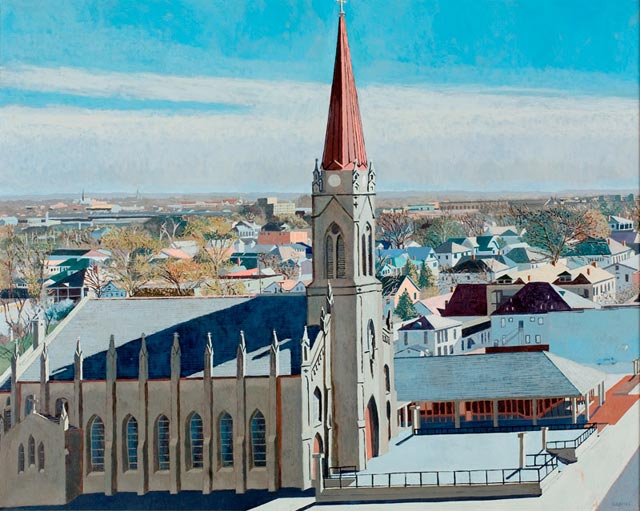
View of St. Joseph’s Cathedral, Baton Rouge, 1967
Mr. Laderman also had a blog where he made many posts about his thoughts on painting and art.
Also there in an engaging article he wrote posted on the International School of Painting, Drawing and Sculpture site called “Learning to Draw Without a Master” that is a great read.
I was fortunate to have gotten a critique from him and hear him give his slide talk when I was an art student at the Yale Summer School in Norfolk. He was very encouraging to me in pursuing my interest in painting from observation but I also learned from him to be open to change as he demonstrated by his own change later in life from many years of working perceptually to then working from memory and imagination.
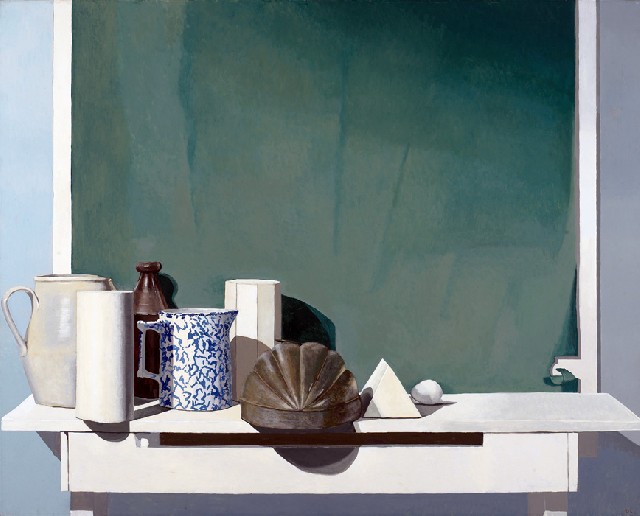
Still Life #2, Homage to David, 1969
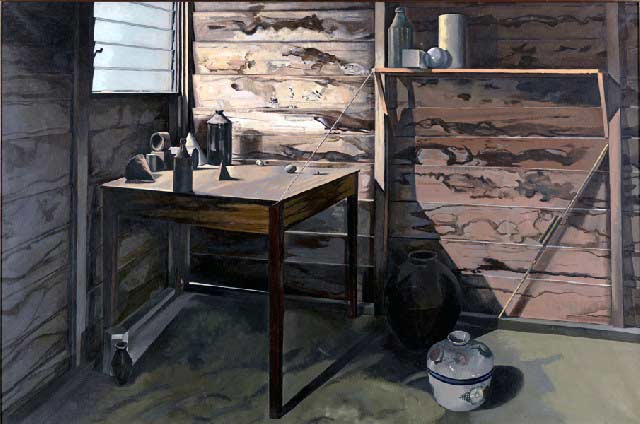
Large Maylasian Still Life, 1976
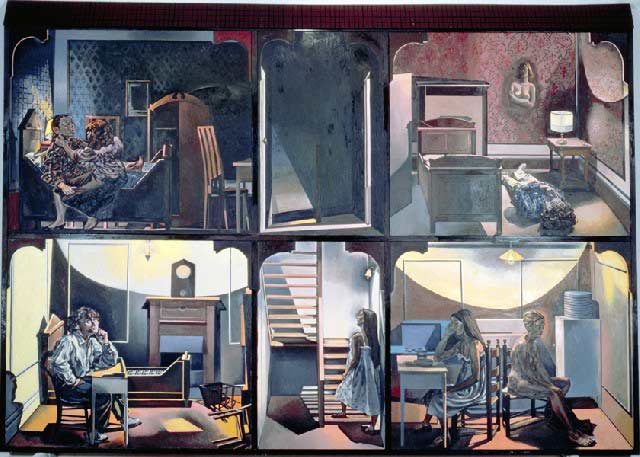
The House of Death and Life, 1984-85

The Dance of Death, 1995-96
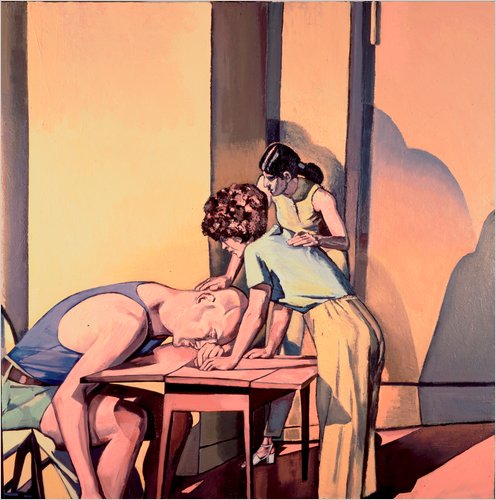
“This Happens,” 1996-97
There are many more images of Gabriel Laderman’s paintings here.





This is sad news. Ever since hearing GL speak at the Boston Museum School when I was a student there in the 70s I’ve admired his work as a serious investigation of the possibilities available to figurative art in our time. My tutor, Barney Rubenstein, was a huge fan of Laderman’s work and held him up as an example to us, which he certainly was and remains.
In 2005 I was in an exhibit here in Washington DC and Gabriel, as he asked me to call him, contacted me about an important concept that was missing from my work. He explained “spacial arabesque” to me and gave me lessons–sent me to the National Gallery to draw, draw, draw. I would send my drawings through email and he would patiently correct them. This has been invaluable to my progress. I went to Cooper Union art school in the 50’s, taught painting and drawing at university for many years and had never understood this fundamental idea. I would never have guessed that my most important teacher would have come to me over the internet and I am eternally grateful.
I’m fairly new to your website Larry, but really appreciate all of your work here. The interviews and articles, as well as the comments from your readers have been particularly helpful to my work.
I really like the following comment by Jed Pearl in regards to Mr. Laderman’s work.
“But unlike some postmodernists, who see their resurgent representational impulses as a reaction against modernism and therefore the next step in a historical progression, Gabriel rejected the very idea of progress in art.”
Seems to be a refreshing thought.
Thank you for the tribute to Mr. Laderman. I studied with him briefly at the Art Students League and was instrumental in getting Mr. Laderman to teach a semester at Yale while I was there. I had a choice of whether to go to Queens College or Yale for my Masters degree and have always regretted not going to the lesser known, but far better, program that Mr. Laderman headed in New York. He was an insightful teacher and critic and his emphasis on following a personal path in painting was one of his greatest gifts to his students. I am sorry to hear of his passing.
Here is a link to Gabriel’s blog.
http://gabrielladerman.typepad.com/blog/
Thanks for posting the link to Gabriel’s blog again – every time I go back to read his blog I find gems rolling around in his many fast moving streams of consciousness.
Thank you so much for this tribute. It gave me chills to see so many of Gabriel’s paintings again. His intellect and talent influenced so many of us over the years and will continue to influence future generations of painters.
I am saddened to find out about Gabriel’s passing away.
He is for me a great teacher, critic and artist.
Who can forget his inquisitive scanning of your drawing or painting?
He was my teacher at Pratt Institute in the 60s.